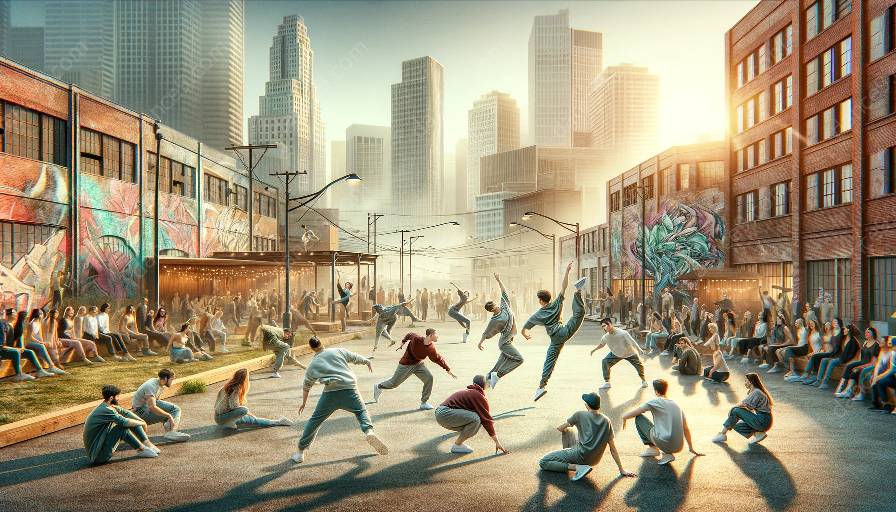Contemporary dance improvisation offers dancers a platform to express themselves dynamically, combining movement with music in a way that resonates with emotional depth and spontaneity. Within this context, rhythm and musicality play a significant role, shaping the narrative and energy of the performance. In this comprehensive guide, we delve into the essential elements of rhythm and musicality in contemporary dance improvisation, exploring how dancers harness these components to create compelling and evocative choreography.
The Role of Rhythm in Contemporary Dance Improvisation
Rhythm forms the backbone of contemporary dance improvisation, providing the structure and tempo that guide the dancers' movements. It serves as a unifying force that integrates the physicality of the dancers with the soundscape, connecting them to the underlying music on a profound level. Through intricate footwork, dynamic gestures, and fluid transitions, dancers interpret and respond to the rhythmic patterns, infusing their movements with a sense of vitality and urgency.
Moreover, rhythm serves as a catalyst for improvisation, offering dancers the flexibility to adapt and innovate their choreography in real-time. This organic interplay between movement and rhythm cultivates a sense of spontaneity and fluidity, allowing dancers to explore new possibilities and push the boundaries of their creativity.
Exploring Musicality in Dance Improvisation
Musicality in contemporary dance improvisation involves the nuanced interpretation and embodiment of the musical elements within the performance. Dancers translate the melody, harmony, and dynamics of the music into physical expressions, creating a symbiotic relationship between their movements and the auditory landscape. Musicality infuses the choreography with emotional depth, as dancers embody the mood and texture of the music through their gestures and kinetic language.
At its core, musicality empowers dancers to tap into the emotional resonance of the music, allowing them to convey a range of sentiments and narratives through their movements. By synchronizing their choreography with the musical nuances, dancers channel the ebb and flow of the music, heightening the audience's sensory experience and fostering a deeper connection with the performance.
Embracing Fusion in Contemporary Dance Improvisation
In contemporary dance improvisation, the fusion of rhythm and musicality transcends traditional boundaries, enabling dancers to explore a diverse range of music genres and styles. This fusion paves the way for innovative collaborations, as dancers draw inspiration from a rich tapestry of musical influences, from classical compositions to electronic soundscapes. By embracing fusion, dancers can orchestrate immersive performances that blend cultural, temporal, and stylistic elements, resulting in captivating and multi-dimensional choreography.
The Creative Process: Nurturing Rhythm and Musicality
The creative process in contemporary dance improvisation revolves around the cultivation of rhythm and musicality as integral components of choreographic exploration. Dancers engage in rhythmic exercises, exploring intricate rhythmic patterns and polyrhythms to expand their movement vocabulary and deepen their rhythmic sensitivity. Moreover, musicality workshops and collaborative sessions enable dancers to refine their ability to interpret and embody the musical dimensions of a composition, fostering a profound connection between movement and music.
Through experimentation and exploration, dancers refine their artistic sensibility and develop a heightened awareness of rhythm and musicality, laying the groundwork for innovative improvisational performances. This process nurtures a dynamic interplay between the dancers' artistic intuition and the rhythmic-musical landscape, allowing for the emergence of choreography that is fluid, expressive, and emotionally resonant.
The Impact of Rhythm and Musicality on Audience Engagement
The infusion of rhythm and musicality in contemporary dance improvisation elevates the audience's engagement by offering a multi-sensory experience that transcends the traditional boundaries of performance. Through the dynamic interplay of movement and music, audiences are immersed in a captivating journey that unfolds through the synergistic fusion of rhythm and musicality. The evocative narratives and emotional depth conveyed through these elements resonate with the audience, fostering a profound and lasting impact that transcends the boundaries of language and culture.
Conclusion
Exploring rhythm and musicality in contemporary dance improvisation unveils an enchanting world where movement and music converge to create compelling narratives and emotional landscapes. As dancers harness the power of rhythm and musicality, they forge choreography that transcends the conventional boundaries of performance, offering audiences an immersive and transformative experience. By embracing rhythm and musicality, contemporary dance improvisation becomes a testament to the boundless creativity and expressive potential of human movement, inviting audiences to embark on a captivating journey that intertwines the visceral language of rhythm and the evocative power of music.




























